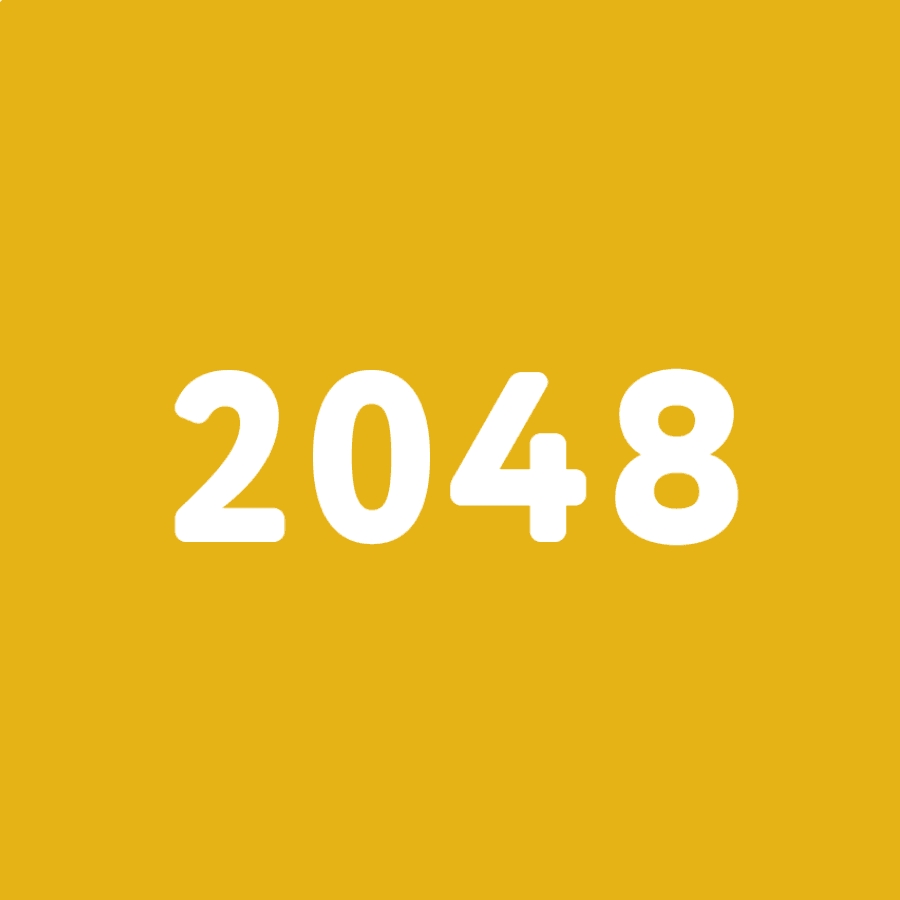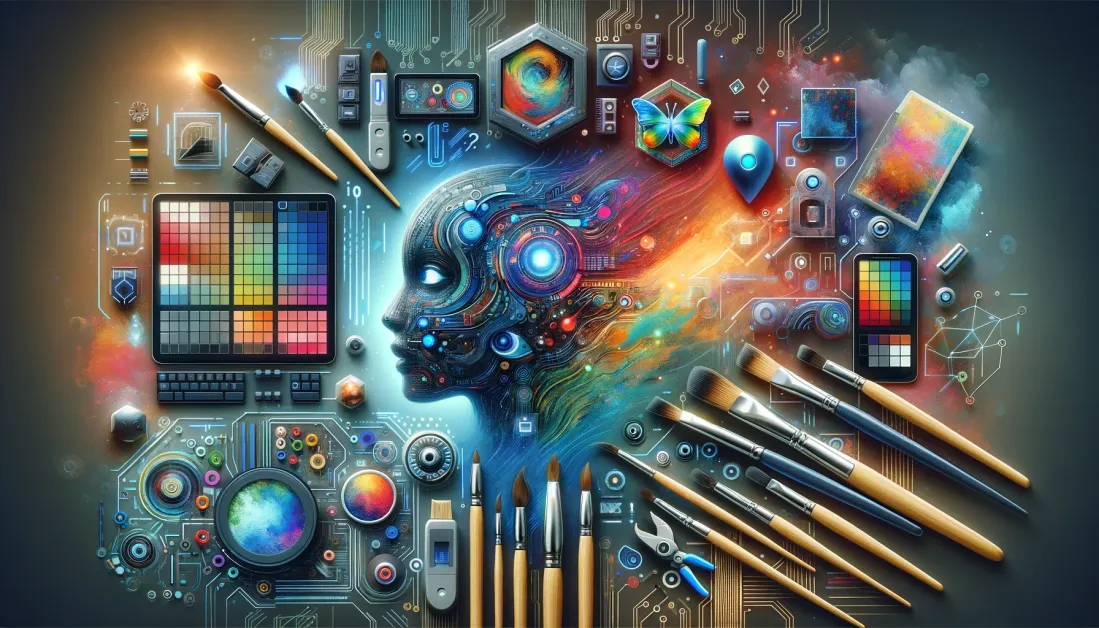

Artificial Intelligence is revolutionizing the world of graphic design and art, offering new possibilities and enhancing creative workflows. From generative AI tools to advanced image editing software, AI is transforming how artists and designers work. Let’s learn more about this topic below with 2048 Unblocked.
The integration of Artificial Intelligence (AI) into graphic design and art has opened up a world of new possibilities for creators. AI tools are revolutionizing the way artists and designers approach their craft, offering innovative solutions to age-old challenges and introducing entirely new creative paradigms. This article will explore the various AI tools available for graphic design and art, their applications, and how they can be effectively utilized to enhance creative workflows and push the boundaries of artistic expression.
AI-powered design software has become increasingly sophisticated, offering a range of features that can streamline the design process and enhance creativity. These tools leverage machine learning algorithms to analyze vast amounts of data and generate design suggestions, color palettes, and even entire layouts based on user inputs and preferences.
One of the most prominent AI-powered design tools is Adobe Sensei, which is integrated into various Adobe Creative Cloud applications. Adobe Sensei uses AI and machine learning to assist designers in tasks such as image editing, color matching, and font selection. For instance, in Adobe Photoshop, the Content-Aware Fill feature uses AI to intelligently fill in areas of an image based on surrounding content, saving designers countless hours of manual work.
Another notable AI design tool is Canva’s Magic Resize feature, which automatically adjusts designs for different platforms and formats while maintaining visual consistency. This tool is particularly useful for social media marketers and content creators who need to adapt their designs for various platforms quickly.
AI-powered design software also includes tools like Designs.ai, which can generate entire brand identities, including logos, color schemes, and marketing materials, based on user inputs and preferences. While these AI-generated designs may not replace human creativity entirely, they can serve as excellent starting points or inspiration for designers.
Generative AI has made significant strides in recent years, particularly in the realm of art creation. These tools use complex algorithms to generate unique pieces of art based on input parameters, opening up new avenues for artistic expression and exploration.
One of the most well-known generative AI art tools is DALL-E 2, developed by OpenAI. This powerful system can create realistic images and art from textual descriptions, allowing artists to bring their ideas to life with unprecedented ease. Artists can use DALL-E 2 to generate initial concepts, explore different styles, or create entirely AI-generated artworks.
Another popular generative AI art tool is Midjourney, which specializes in creating highly detailed and imaginative images based on text prompts. Midjourney has gained a significant following among digital artists and illustrators for its ability to produce stunning, dreamlike visuals.
Artbreeder is another innovative AI art tool that allows users to combine and “breed” existing images to create new, unique artworks. This tool is particularly useful for concept artists and character designers looking to generate fresh ideas and visual elements.
While these generative AI tools have sparked debates about the nature of creativity and authorship in art, many artists are embracing them as powerful tools for ideation and experimentation. By understanding the capabilities and limitations of these AI systems, artists can leverage them to enhance their creative processes and push the boundaries of their artistic practice.
Read more: Top AI Trends That Will Dominate the Next Decade
AI has significantly improved image editing and manipulation capabilities, offering tools that can automate complex tasks and achieve results that were once time-consuming or nearly impossible to achieve manually.
One of the most impressive AI-enhanced image editing tools is Nvidia’s GauGAN, which can turn simple sketches into photorealistic landscapes. This tool uses a type of AI called generative adversarial networks (GANs) to understand the relationships between different elements in a landscape and generate highly detailed, realistic images based on rough input sketches.
Adobe’s Neural Filters in Photoshop represent another leap forward in AI-enhanced image editing. These filters can perform complex adjustments like changing a subject’s age or expression, transferring makeup from one face to another, or even animating still images. While these tools require careful use to maintain realism, they offer unprecedented control over image manipulation.
AI-powered image upscaling tools like Topaz Gigapixel AI have also become invaluable for designers and artists working with low-resolution images. These tools can intelligently increase the resolution of images while maintaining sharpness and detail, far surpassing traditional upscaling methods.
For photographers and retouchers, AI-powered tools like Anthropic have revolutionized the photo editing process. These tools can automatically retouch portraits, remove blemishes, and even swap out backgrounds with remarkable accuracy, saving hours of manual editing work.
While AI tools offer incredible capabilities, integrating them effectively into creative workflows requires careful consideration and a clear understanding of their strengths and limitations.
Firstly, it’s important to view AI tools as collaborators rather than replacements for human creativity. These tools can generate ideas, automate repetitive tasks, and provide new perspectives, but the artist or designer’s vision and decision-making remain crucial to the creative process.
When implementing AI tools, start by identifying areas of your workflow that could benefit from automation or enhancement. This might include tasks like initial concept generation, color palette creation, or image retouching. Experiment with different AI tools to find those that align best with your creative style and workflow.
It’s also crucial to maintain a critical eye when using AI-generated content. While these tools can produce impressive results, they may sometimes create unrealistic or inappropriate elements that require human intervention to correct. Always review and refine AI-generated content to ensure it meets your creative standards and aligns with your vision.
For designers working in teams or with clients, it’s important to communicate clearly about the use of AI tools in the creative process. Some clients may have concerns about the authenticity or originality of AI-generated content, so be prepared to explain how you’re using these tools to enhance rather than replace human creativity.
As you become more comfortable with AI tools, look for opportunities to push their capabilities and combine them in innovative ways. For example, you might use a generative AI tool to create a base image, then refine it using AI-enhanced editing tools, and finally add hand-drawn elements for a unique hybrid approach.
As AI becomes increasingly prevalent in graphic design and art, it’s important to consider the ethical implications of these tools. Issues such as copyright, attribution, and the potential for AI to perpetuate biases present in training data are all areas of ongoing debate and concern.
Artists and designers should strive to use AI tools responsibly, being transparent about their use and giving proper credit where due. It’s also important to be aware of the terms of service for AI tools, particularly regarding ownership and usage rights for AI-generated content.
Looking to the future, we can expect AI tools for graphic design and art to become even more sophisticated and integrated into creative workflows. Advancements in areas like natural language processing may lead to even more intuitive interfaces for generating and manipulating visual content.
We may also see increased personalization in AI tools, with systems learning individual artists’ styles and preferences to provide more tailored assistance. Additionally, as AI becomes more accessible, we could see a democratization of design and art creation, with powerful tools becoming available to a wider range of creators.
However, as AI capabilities grow, so too will the importance of human creativity, critical thinking, and ethical consideration. The most successful artists and designers of the future will likely be those who can effectively balance the power of AI tools with their own unique vision and artistic sensibilities.
Read more: AI and Cybersecurity How Smart Systems Fight Hackers
AI tools are reshaping the landscape of graphic design and art, offering unprecedented capabilities and opening up new avenues for creative expression. From generative AI that can create entire artworks from text prompts to sophisticated image editing tools that can perform complex manipulations with ease, these technologies are transforming how artists and designers work.
By understanding the capabilities and limitations of AI tools, and integrating them thoughtfully into creative workflows, artists and designers can enhance their productivity, explore new creative directions, and push the boundaries of what’s possible in visual art and design.
As we move forward, it will be crucial for creators to stay informed about the latest developments in AI technology, engage in ongoing discussions about its ethical implications, and continually explore new ways to combine human creativity with artificial intelligence. The future of graphic design and art is likely to be a fascinating interplay between human vision and AI capabilities, promising exciting possibilities for creative expression and innovation.